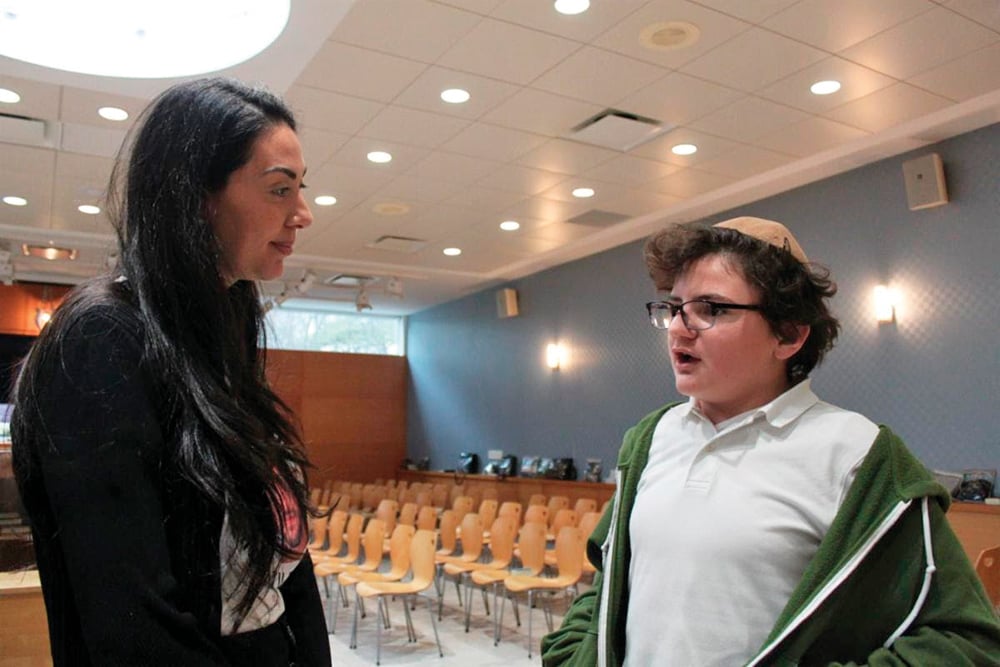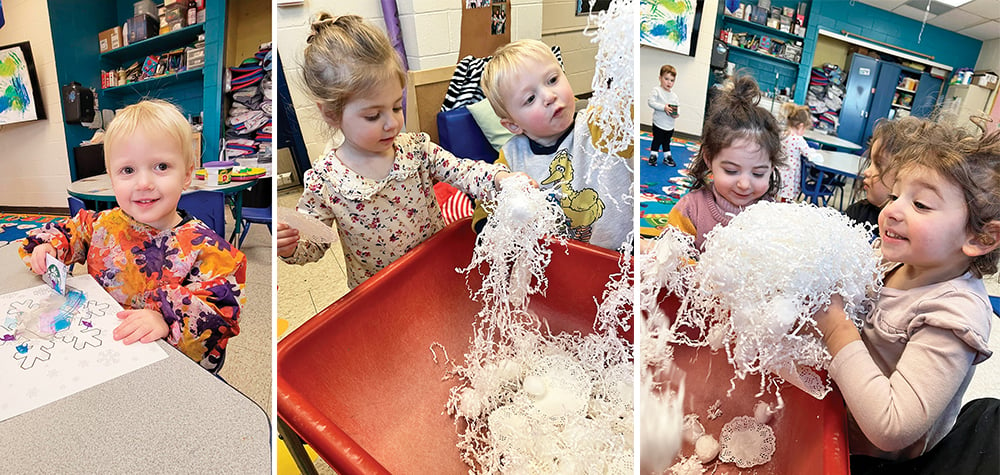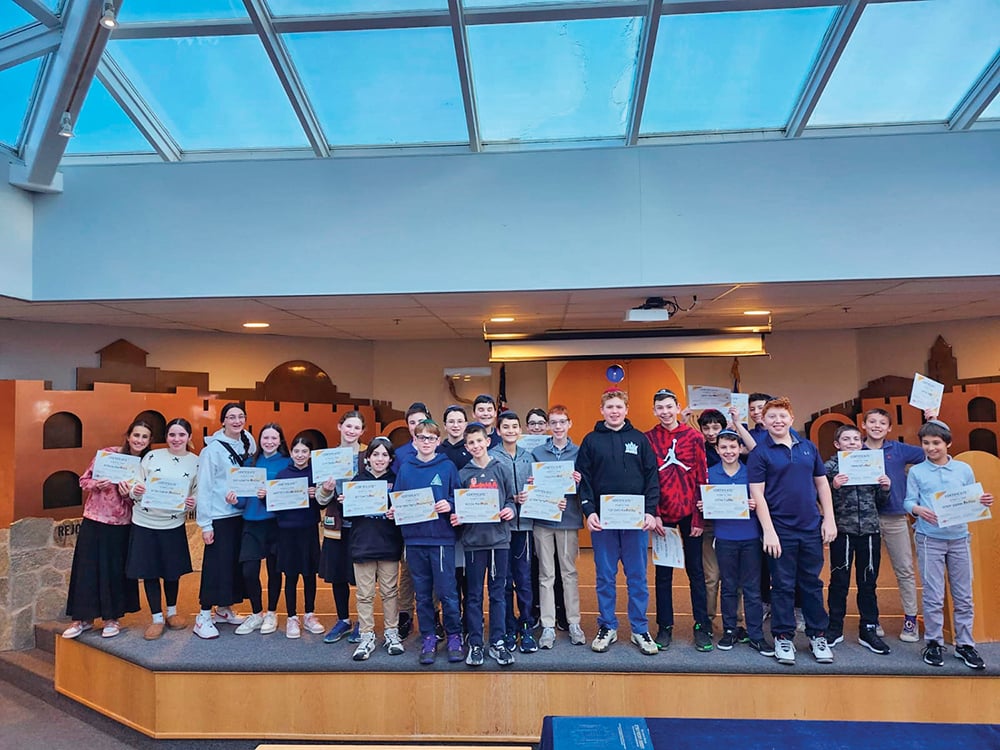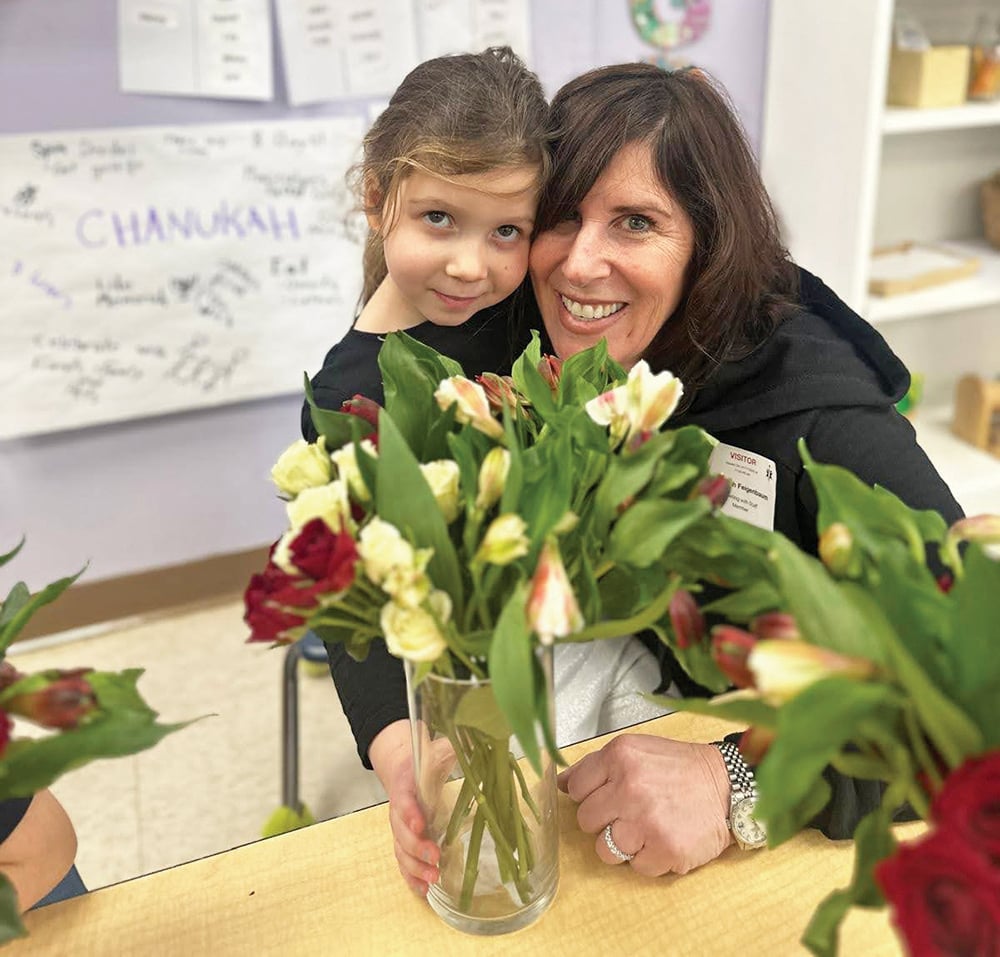I wear my tallit in shul when I daven. I come on time so that when services begin I am ready. I remove my tallit when davening is over. On weekdays that means after the Shir Shel Yom, and on Shabbos that means after Adon Olam. I am exasperated when I observe men removing their tallit and tefillin during the week after Ashrei and equally annoyed when I see what happens in most synagogues during Adon Olam. Either it’s part of the service or it’s not. If it is then it should receive the same respect as other parts of the service. If it’s not then why is it in the siddur and why is it recited?
I once saw a Jewish comedian doing a hilarious pantomime to someone folding his tallit to the tune of Adon Olam. Equally noteworthy are the numerous tunes that fit the structure of Adon Olam. A posting on YouTube shows a rabbi and cantor leading the congregation in Adon Olam to a tune from Hamilton! A very prominent chazan sings Adon Olam to a Beatles tune. All this despite Rabbi Akiva’s admonition not to use non-Jewish tunes in our tefillot.
This stems from a major lacuna in Jewish education: the omission of a structured approach to the siddur and our prayers. Even advanced rabbinical students who have mastered the laws of prayer have often not studied the prayers themselves. Every page of the siddur can be studied as assiduously as a page of Talmud. Why isn’t it taught in our day schools and yeshivot? Why don’t rabbis offer courses on the siddur and machzor? Years ago, when Cong. Beth Aaron first started in an ophthalmologist’s waiting room, their first rabbi, Rabbi Stanley Fass, knew that he had a chance to mold this new congregation, and so for the first two years only spoke about prayer. There’s a lot of davening going on in our shuls, but how many really understand what they are saying?
Despite the high rate of yeshiva-educated daveners in our community, the siddur is the text with which we are most familiar but about which we know the least. How did the siddur become the siddur? When did this happen? Who decides what to include? Are some parts more important than others? What do the prayers really signify? What is the structure and symbolism of the siddur and the machzor? The ArtScroll notes at the back of the siddur are merely a loose outline of some laws that we need to know. I would like to offer some analysis of Adon Olam to help us understand why it is a very significant prayer and why we should be reciting it with the reverence it deserves.
Adon Olam appears before Birkot HaShachar (along with Yigdal) at the very beginning of Shacharit. It is also recited at the end of Kriat Shema al HaMita. On Shabbos and Yom Tov it is sung at the conclusion of Musaf. It is also recited at a deathbed, and in Morocco it is said under the chuppah.
Avraham was the first to call Hashem “Adon”—Master/Lord. He introduced this novel idea to the world. Furthermore, according to Rav Shimshon Rafael Hirsch, it was Avraham who proclaimed Hashem as Adon-ai, indicating that there is a personal relationship with Hashem.
Probably written by Solomon ibn Gabirol, it was already known in the Geonic era. In fact, Rav Sherira Gaon and Rav Hai Gaon are cited by Rav Yehudah HaChasid, stating that anyone who recites Adon Olam with kavanah is guaranteed that his/her prayers will be heard, that the satan will have no negative effect on him/her in general and especially on Rosh Hashanah and Yom Kippur, and enemies will be eliminated. That’s quite a guarantee. More recently, the Munkatcher Rebbe would stand in reverence when he recited Adon Olam. Contrast that to how it is often recited in shul today.
Adon Olam is a gem of a prayer, a tour de force hiding in plain sight. Somewhere, somehow, the true glory of this emotional and poetic masterpiece got lost. It conveys a framework for our relationship with and our understanding of God. Naturally, Kabbalists have a field day with this prayer. Rabbi Yosef Yitzchak Schneersohn (the RaYaTZ of Lubavitch) has a discourse on Adon Olam, as does Rabbi Yeshaya HaLevi Horowitz (the Shaloh), Rabbi Moshe Cordevero (RaMaK) and Tikkunei Zohar. In layman’s terms, Hashem, the Infinite, represents Atzilut, Divine Emanation, which in Kabbalistic terminology is the highest of the four spiritual worlds, the realm of spiritual existence. Although encompassing attributes that have a specific definition, God is in a state of infinity and at one with the Infinite Divine Light. Infinity (Ein Sof), by the way, equals Adon Olam in gematria (207).
Without going too deep, we shall present some basic meanings of the prayer. First of all, what does “Adon Olam” mean? English translations differ. “Master of the World” is common, but as Mitchell First pointed out in these pages some time ago, the Hebrew word “olam” as used in TaNaCh over 400 times means eternal or infinite. There is a lot of discussion among Hebrew grammarians on this point, but it is safe to say that Adon Olam means Eternal Lord, since Hashem existed before time was created. This theme is repeated several times in various ways. (See stanzas 1, 3, 4, 6)
Eternal master, who reigned supreme,
Before all of creation was formed, אֲדוֹן עוֹלָם אֲשֶׁר מָלַךְ
בְּטֶרֶם כָּל יְצִיר נִבְרָא
When it was finished according to His Will,
Then “King” His name was proclaimed to be לְעֵת נַעֲשָׂה בְחֶפְצוֹ כֹּל
אֲזַי מֶלֶךְ שְׁמוֹ נִקְרָא
When this our world shall be no more,
In majesty He still shall reign, וְאַחֲרֵי כִּכְלוֹת הַכֹּל
לְבַדּוֹ יִמְלוֹךְ נוֹרָא
And He was, and He is,
And He will be, in glory. וְהוּא הָיָה וְהוּא הֹוֶה
וְהוּא יִהְיֶה בְּתִפְאָרָה
He is unique, there is no second,
to compare with Him, to place beside Him.. וְהוּא אֶחָד וְאֵין שֵׁנִי
לְהַמְשִׁיל לוֹ לְהַחְבִּירָה
Without beginning, without end,
To him is the power and sovereignty בְּלִי רֵאשִׁית בְּלִי תַכְלִית
וְלוֹ הָעֹז וְהַמִּשְׂרָה
He is my God, my living Redeemer
Rock of my affliction in time of trouble וְהוּא אֵ-לִי וְחַי גּוֹאֲלִי
וְצוּר חֶבְלִי בְּעֵת צָרָה
He is my Banner and Refuge
Filling my cup the day I call וְהוּא נִסִּי וּמָנוֹס לִי
מְנָת כּוֹסִי בְּיוֹם אֶקְרָא
Into his hand I commit my spirit
When I sleep, and I awake בְּיָדוֹ אַפְקִיד רוּחִי
בְּעֵת אִישָׁן וְאָעִירָה
And with my spirit, my body
The Lord is with me, I will not be afraid. וְעִם רוּחִי גְוִיָּתִי
ה׳ לִי וְלֹא אִירָא
Very lofty ideas. The Sefardi version is a bit longer, but each stanza contains very sacred thoughts. Elucidating every stanza would take too long, but I want to note two verses. The last four lines indicate the possible origin of this prayer as a bedtime supplication.
בְּיָדוֹ אַפְקִיד רוּחִי
בְּעֵת אִישָׁן וְאָעִירָה
וְעִם רוּחִי גְוִיָּתִי
ה׳ לִי וְלֹא אִירָא
These verses were somehow adopted as a Christian children’s prayer that has comforted many youngsters (and adults) at bedtime. Over the years it’s become one of the best-loved rhymes ever written:
“Now I lay me down to sleep, I pray the Lord my soul to keep; and If I should die before I wake, I pray the Lord my soul to take.”
How and when this was appropriated from Adon Olam is a great detective story, but it is almost a literal translation of the last two stanzas.
Moreinu HaRav Yosef Dov Halevi Soloveitchik, z”l, explained the passage in Brachot 32b that states that prayer is one of the things that requires chizuk, which he interprets as constant repetition and review. The other three are good deeds, Torah study and derech eretz. If there is constant repetition, success will follow. That’s how he explains the custom of starting Bereishit right after finishing Devarim, starting a new masechta right after making a siyum, reading the next week’s parsha at Mincha, etc. That’s also why we say “Chazak Chazak V’nitchazek” at the conclusion of a sefer. It’s also why we recite Adon Olam at the end of services, having already recited it as we started davening. The bookending of this prayer demonstrates that we are prepared to start our prayers all over again, since prayer requires chizuk!
Finally, regarding the recitation of Adon Olam, the Piskei Teshuvot cites the Lekutei MaHaRIaCh that full comprehension of this prayer requires great concentration and kavanah prior to its recitation. If we do not really concentrate on the meaning of these words, it [the rote singing] is like a body without a soul. And what good is that?
Rabbi Dr. Wallace Greene gives a Zoom shiur every Wednesday and Friday from 9:15-10 a.m. To join, contact Mendy Aron at [email protected]. This article is based on a recent shiur.













